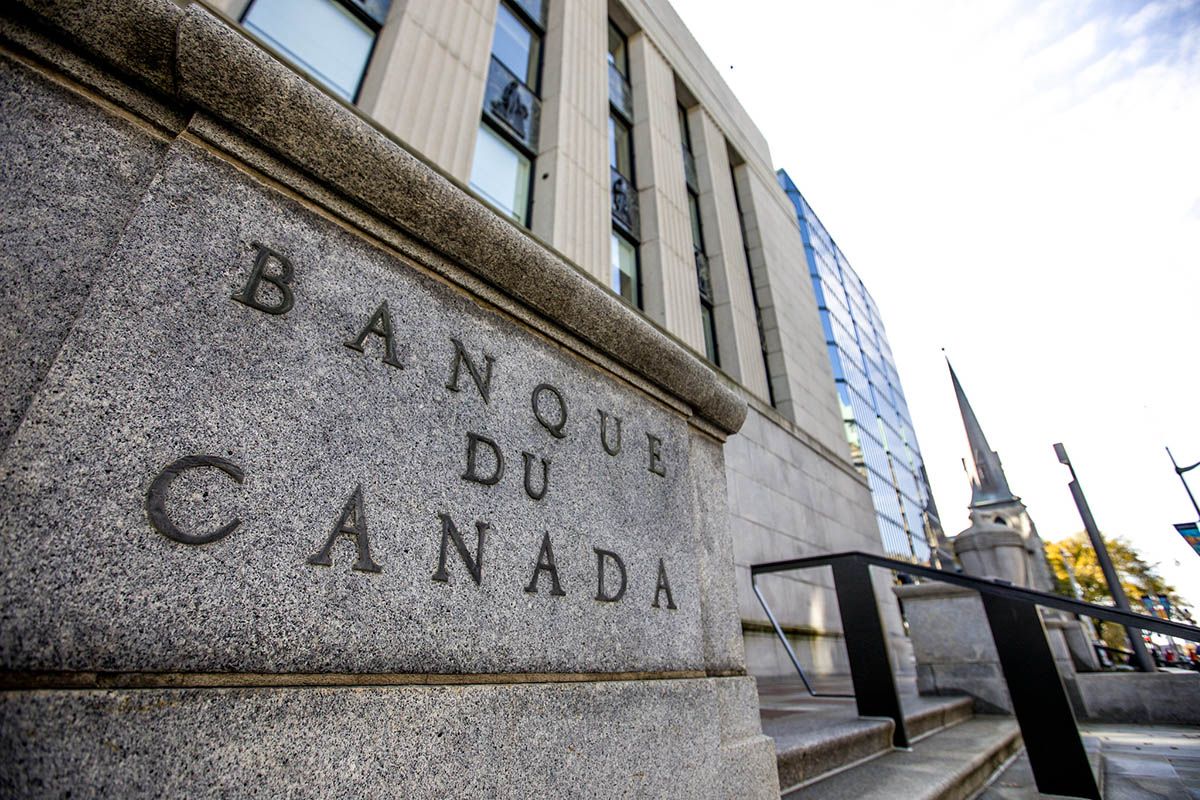Canadian Dollar Trails as ISM Offers Fed More Reason for Cheer
- Written by: James Skinner
-
"The CAD continues to trade in the shadow of the USD to a large extent but could pick up some support if the FOMC does veer somewhat dovishly today" Scotiabank.

Image © Bank of Canada, Reproduced Under CC Licensing
The Canadian Dollar gave way to most other comparable currencies in midweek trade after the Institute for Supply Management (ISM) offered further signs of the Federal Reserve having success in wrestling down U.S. inflation, leading to a continued underperformance of North American currencies and further large declines for oil prices.
Canada's Dollar was little changed against an otherwise broadly weaker U.S. Dollar on Wednesday but losses in both built further after the Institute for Supply Management Services PMI ticked higher for the month of April and indicated that services sector inflation was all but nonexistent in the U.S. last month.
"There has been a slight uptick in the rate of growth for the services sector, due mostly to the increase in new orders and ongoing improvements in both capacity and supply logistics. The majority of respondents are mostly positive about business conditions," says Anthony Nieves, Chair of the Institute for Supply Management.
"However, some respondents are wary of potential headwinds associated with inflation and an economic slowdown," Nieves adds.
April's Services PMI came in at 51.9, up from 51.2 previously and ahead of an economist consensus looking for a 51.8 reading.
Above: USD/CAD at 15-minute intervals with GBP/USD and EUR/USD. Click the image for closer inspection. To optimise the timing of international payments you could consider setting a free FX rate alert here.
The data suggests the U.S. economy might be on course for the 'soft landing' scenario widely anticipated by economists for the current year but at least as important for the currency market was the meager 0.1% increase in the ISM Services Prices Index.
This is indicative of services sector inflation having fallen in April to levels that would be below the 2% Federal Reserve target for overall inflation, which is important because it's price developments in the services sector that are being most closely watched, if not actively targeted by the bank.
The services prices outcome contrasts with the trajectory of ISM Manufacturing Prices Index, which rose sharply when the equivalent PMI survey was released on Monday.
April's services price outcome is consistent with the Personal Consumption Expenditures Price Index (PCE) report from the Bureau of Economic Analysis suggesting just last Friday that services inflation had halved to just 0.2% in March; a level that is loosely consistent with the Fed's 2% target.
"There are signs that the US economy is responding to tighter monetary policy and the idea that the Fed tightens “until something breaks” is probably gaining a bit more credence as stress in the US regional banking system resumes," says Shaun Osborne, chief FX strategist at Scotiabank.
"The CAD continues to trade in the shadow of the USD to a large extent but could pick up some support if the FOMC does veer somewhat dovishly today," Osborne adds.
Source: Institute for Supply Management. Click the image for closer inspection.
All of the above price developments support the popular notion that the Fed is, at worst, on the cusp of what might be its last increase in U.S. interest rates this Wednesday.
Numerous policymakers have flagged inflation in the services sector as key to their own interest rate decisions since updated Federal Open Market Committee forecasts suggested in December and March that interest rates would likely need to be raised to somewhere between 5% and 5.5% this year in order to contain inflation.
But since then the effects of the Fed's earlier interest rate steps have led a larger number of small and medium-sized banks into difficulty with one falling into receivership while others have seen shares fall heavily as a result of related speculation.
"The Fed is going to hike 25bps and likely keep the door open for more down the road if needed as well. We think they shift the tone from a heavy focus on current inflation to a more moderate stance on the outlook which opens the door for completion of this cycle," says Brad Bechtel, global head of FX at Jefferies.
"They are under political pressure and media pressure and other pressures to finally stop their rate hikes and that probably only emboldens them to go further. But they are also pragmatic and will look to," Bechtel adds in a Wednesday market commentary.
Above: USD/CAD shown at daily intervals with spread or gap between 02-year U.S. and Canadian government bond yields. Click the image for closer inspection.














